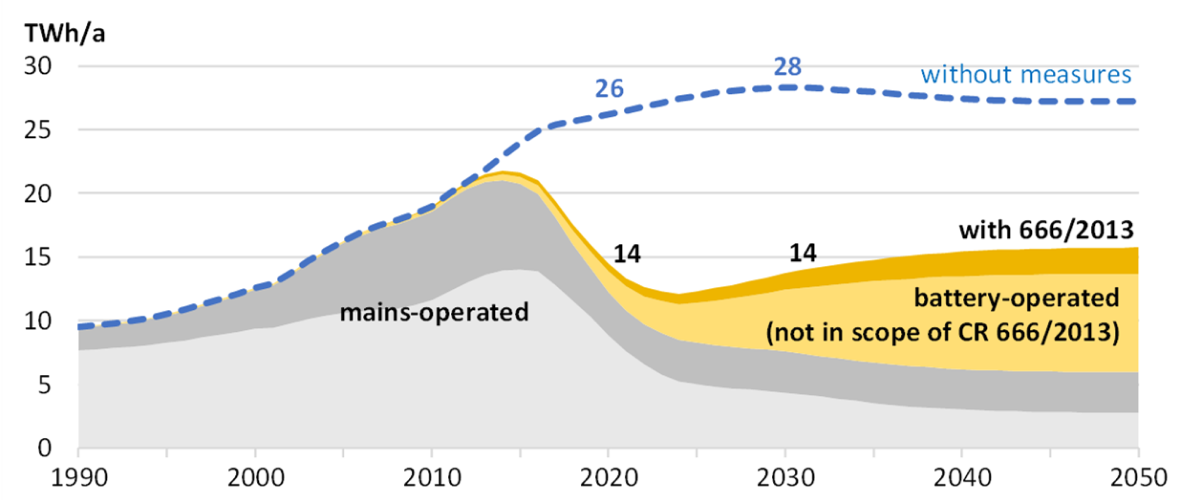Until some years ago, consumers tended to select their vacuum cleaner (VC) based on its input power, assuming that higher power equals better cleaning performance.
Manufacturers stimulated this by producing VCs with ever higher power and advertising with this. Without measures, this trend led to an increase in domestic VC power from 1200 W in 1990 to 2300 W in 2020. However, a higher input power does not always imply better cleaning performance.
The 2013 Ecodesign regulation limits the maximum power and annual energy consumption of VCs (max 1600 W and 62 kWh/a from 2014; max 900 W and 43 kWh/a from 2017), while at the same time setting minimum requirements for the cleaning performance.
Types
Source: estimations from the Ecodesign Impact Accounting Overview Report 2023












